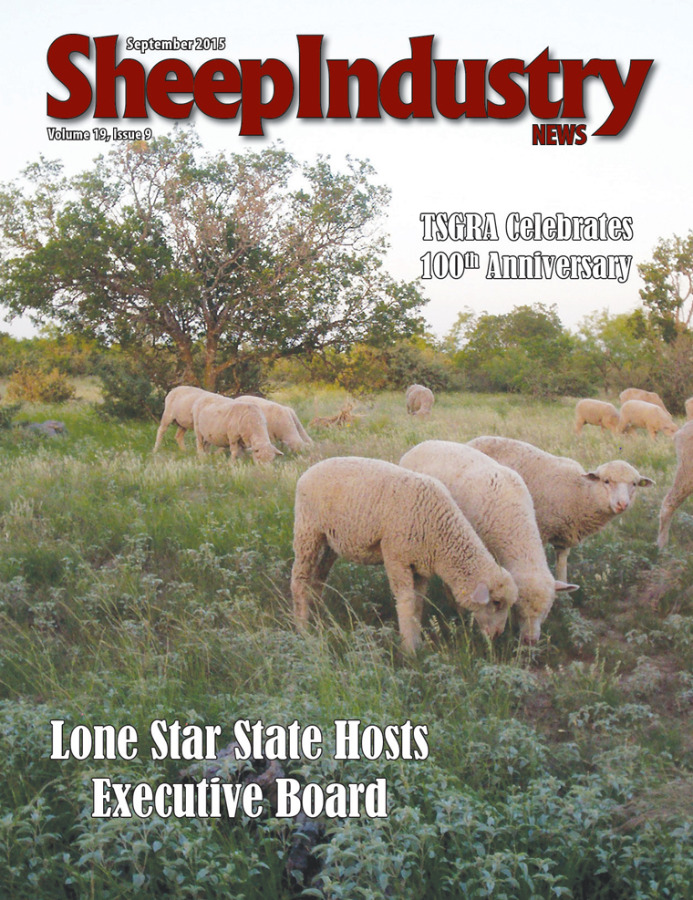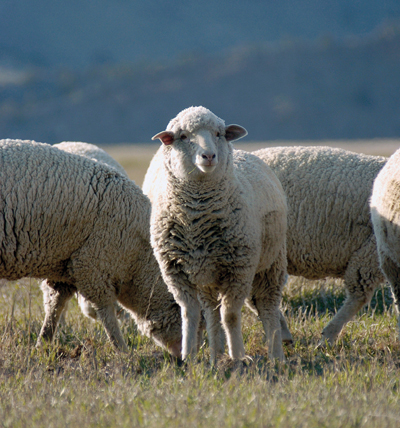
- September 2015
- President’s Notes
- Producers Testify in Wyoming
- Let’s Grow Announces Second Round of Funding
- Lone Star State Celebrates Two Anniversaries
- Helle Wins Preliminary Battle in Federal Grazing Lawsuit
- Lamb Jam Master To Be Decided in New York
- Fibrelux Shows Value in Early Tests in San Angelo
- Obituaries
- NSIIC Accepting Grant Proposals
- New Research Journal Article Posted
- Market Report
- Sheep News In Brief
- The Last Word
Helle Wins Preliminary Battle in Federal Grazing Lawsuit
THEODORA JOHNSON
Western Livestock Journal Correspondent
A federal judge has spared a Montana ranching family from removing 8,000 head of sheep from their federal range this summer. This is one piece of good news for the Helle family, but the lawsuit by an anti-grazing group is not over. The Gallatin Wildlife Association is suing to halt grazing on the family’s seven federal sheep grazing allotments in southwestern Montana.
The Group’s Claim?
That domestic sheep grazing is incompatible with grizzly bear and the bighorn sheep population that was introduced 12 years ago.
 The Gallatin group had asked Federal District Court Judge Brian Morris to immediately ban grazing on two of the seven allotments while the lawsuit plays out.
The Gallatin group had asked Federal District Court Judge Brian Morris to immediately ban grazing on two of the seven allotments while the lawsuit plays out.
Gallatin claimed that bighorn sheep, grizzlies, and the group’s own members would suffer “irreparable harm” if grazing weren’t removed immediately from the two allotments. But in late July, Judge Morris denied the injunction request, pointing out that sheep grazing has taken place in the area for 150 years. One more year of grazing while the court deliberates, he said, is not going to have a significant effect on grizzlies, bighorn or Gallatin’s members.
The judge’s denial on the injunction is good news for the family, but it’s just one chapter of a bigger story. Next summer, Judge Morris will likely make a decision that affects all seven of the family’s allotments. He will decide whether the U.S. Forest Service violated the National Environmental Policy Act, the National Forest Management Act, and the Endangered Species Act by allowing Helles’ sheep grazing operation to continue on the Beaverhead–Deerlodge National Forest.
John Helle is a board member to the national Public Lands Council, a Washington-based group that fights for federal land grazing rights.
“We as a family and we at PLC want to draw attention to some of the tactics used by Gallatin in our case, because it’s so typical of these groups’ abuse of the law across the West,” Helle told the Western Livestock Journal. “We also want your readers to stop and ask themselves, ‘What’s motivating groups like Gallatin?’ Because if they really want ecological vitality, they are barking up the wrong tree by attacking ranchers.”
Counting On DOJ?
When the Gallatin group first hit the federal government with their lawsuit against Helle’s grazing this spring, the Helle family soon learned they’d need to lawyer up.
“The Department of Justice represents the Forest Service in court,” Helle explained. “DOJ’s Washington, D.C., attorneys have limited experience in our issues, and we could see they weren’t prepped enough. So we hired our own lawyer and intervened in the case.”
Ranching families with federal grazing rights often find themselves intervening to defend the federal land management agencies against anti-grazing groups’ litigation, Helle said.
“It’s ridiculously expensive. Our family expects to pay around $60,000 in attorney fees,” Helle said.
“But we have no choice. This group is challenging every one of our allotments. If we lose them, we lose our business and our way of life.”
EAJA Reimbursement
Helle pointed out that Gallatin’s complaint included a request for reimbursement of their attorney fees under the Equal Access to Justice Act. This option is only open to the party suing the government – not the rancher defending his federal grazing rights. Some federal judges will award environmental groups up to $750 per hour for “attorney fees” under EAJA.
But Helle said he believes there’s more driving Gallatin than just EAJA fees, which the group wouldn’t receive until the judge makes his ruling next year, if at all.
“Who is funding this group’s litigation, ultimately? And who is pushing for it? Is it powerful sportsmen’s groups hoping to remove domestic sheep and make it one big wild sheep reserve?” Helle pondered aloud.
Bighorn Threat
Bighorn sheep are central to Gallatin’s lawsuit. The group claims the Forest Service ignored the “threat” that domestic sheep pose to the “viability” of bighorn sheep in the area. Forest Service considers bighorn a sensitive species, and the agency’s own regulations require that it manage for the viability of all sensitive species.
“‘Sensitive species’ are designated at the will of a forest supervisor,” Helle explained. “Unlike species listed under the ESA, they don’t have to undergo strenuous scientific or public review. It’s a whole separate category of protected species we have to contend with, created by Forest Service regulations.”
In the past, anti-grazing groups have had some success in stopping grazing by suing based on sensitive species concerns. Thus, the Helles were alarmed when the U.S. Forest Service and the Montana Fish and Wildlife Department proposed to introduce bighorn to the area around 15 years ago. But the Helles eventually entered a memorandum of understanding with the agencies, which stated bighorn could be introduced, so long as the Helles’ grazing operation was not harmed.
Then two things happened that should stand as a lesson to other ranchers faced with possible species introduction, Helle warned.
“First, the Forest Service attempted to go back and weaken our original agreement, which was originally made in perpetuity. They rewrote the MOU in 2008 to say that either party can now back out at any time. Second, Gallatin has come along with their lawsuit. Whether the agency intended for this to happen or not, they opened a door to litigation by these groups when they introduced bighorn on and near our allotments.”
Although Judge Morris won’t make a final decision until some time next summer, his memo from this summer indicated he’s not likely to side with Gallatin on their bighorn claims.
“We consider this a very good omen,” Helle said. “The whole industry stands to benefit from a positive ruling from Judge Morris, because the bighorn issue is so widespread and so threatening to our entire industry.”
Grizzly Claims
Unlike the bighorn, the grizzly bear is actually listed as “threatened” under the ESA. In its litigation of Helle’s allotments, Gallatin claimed that the Helles’ sheep operation threatens grizzlies in the area.
“Last time I checked, grizzlies loved to eat sheep,” Helle said. “But this lawsuit stands as proof that having a listed species on your allotment is a liability, whether you’re harming the bears or not.”
Thankfully, Helle said, Morris’ comments from last week make it look like he doesn’t plan to play along with Gallatin’s claims in his final decision.
Long View
If the judge does rule in favor of the Helles next summer, Gallatin is likely to appeal the decision to the Ninth Circuit Court of Appeals, Helle said.
His family’s fight will wage on. Yet, he is determined to use this case as a public education opportunity. He pointed readers toward his family’s new Facebook page, Fight for Agriculture’s Future.
“I think this is a chance to expose groups like Gallatin and what they’re really about,” Helle told us. “Keeping ranchers on the land means keeping subdivisions off, and keeping wildlife habitat open and healthy. We’ve got real conservation groups that we work with, and they are starting to recognize that. But then there are these hit-men for big money interests that I think are trying to get control of the land – maybe replace our homesteads with vacation resorts and our grazing allotments with wildlife preserves. This is our industry’s chance to separate the legitimate conservation groups from the ones who are in it for the money and the power.”
Editor’s Note: The ASI Executive Board voted in late July to approve up to $40,000 in Guard Dog funds to help defray the Helle family’s legal expenses in this case.

